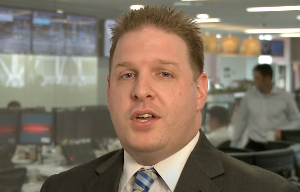Westpac predicting 15% fall in house prices
Westpac Bank is now predicting a 15% house price fall over the next two years.
Tuesday, May 10th 2022, 11:19AM

However, this will only bring average house prices back to where they were at the start of 2021.
The bank’s economics team previously expected a 10% peak-to-trough fall in prices over this year and the next. It has now front-loaded the fall, with a 10% drop in 2022 and a further 5% in 2023.
Acting chief economist Michael Gordon says the forecast is of the national average; the economics team doesn’t forecast house prices by region, but obviously there are some regions that will see a bigger than average decline, and are already on track to do so.
“Our modelling suggests a true ‘market clearing’ price right now would be more than 15% below current levels.
However, we also consider the dynamics of the housing market when we form our forecasts. In the absence of distressed sales (which we don’t expect to be a major factor), property owners generally won’t sell at a loss if they don’t have to. This means that some of the adjustment will come in the form of lower turnover instead of lower prices,” says Gordon.
He says the housing data has validated the bank’s view the market has turned.
House prices have been falling since the end of last year, and at a fairly rapid pace compared to history (considering that any drop in prices at all is a rare occurrence). Higher mortgage rates, and in particular the sharp rise in fixed-term rates that began about September last year, are having the impact we expected on what buyers are willing to pay for a property.
Gordon says the economics team held a fairly consistent line on interest rates in recent times. In November, it predicted \the Official Cash Rate would reach a peak of 3% over the next couple of years. “At the time, that was at the top of the range of market forecasts, and \we faced some questions about whether the economy could really withstand a rise in interest rates of that scale,” he says.
“Since then, market opinion has caught up to and even overtaken our view. By February, interest rate markets were also factoring in a peak OCR of about 3%; today, that implied peak is now substantially above 4%.
"Whether that’s a genuinely held view about local economic conditions, or whether we’re just being dragged around by overseas markets, is a moot point. The fact is that it’s the market interest rates that determine banks’ funding costs, and hence what they charge to borrowers.”
As a result, Gordon says mortgage rates have already risen beyond where they were expected to peak in this cycle. And while the economics team would argue the market is overcooking it in terms of the OCR outlook, the reality is that it will continue to do so until given a clear reason to think otherwise. (That reason will be a substantial drop in house prices, making it something of a self-defeating prophecy.)
He says the economics team maintains its view that fixed-term mortgage rates are much closer to their peaks than their troughs for this cycle.
“There is so much tightening already baked into the market that even if the Reserve Bank did lift the OCR all the way to 4%, fixed-term mortgage rates won’t need to move anywhere near as far. That varies depending on the length of the term – a one-year rate will still continue to rise as we approach the date of the peak OCR, whereas a five-year rate need not rise much further at all.”
| « Falling house prices slowly entrenching | Interest rates biting investors as market correction kicks in » |
Special Offers
Comments from our readers
No comments yet
Sign In to add your comment
| Printable version | Email to a friend |


